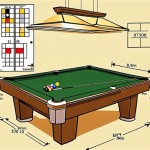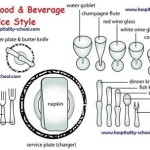When Can Toddlers Sit At Table? A Comprehensive Guide
Determining the appropriate time for a toddler to sit at the table for meals is a significant milestone in their development. This transition signifies increasing independence, social interaction, and fine motor skill development. However, it's not solely about age; several factors play a crucial role in deciding when a toddler is ready and able to participate successfully in family mealtimes.
The transition to sitting at the table is a gradual process and requires careful consideration of the toddler's physical, cognitive, and emotional readiness. Rushing the process can lead to frustration for both the child and the caregivers. This article provides a comprehensive guide to understanding the factors involved in this transition and offering helpful insights for parents and caregivers.
Developmental Milestones: Physical Readiness
Physical readiness is the cornerstone for introducing a toddler to seated meals at the table. Before expecting a toddler to sit comfortably and safely, they must possess certain fundamental physical abilities.
Firstly, the toddler needs to have adequate head control and upper body stability. This typically develops around six months of age when babies can sit upright independently for a reasonable duration without needing support. Improved core strength is vital for maintaining posture while seated, ensuring that the child does not slump or struggle to stay upright. Slumping can impact swallowing and make eating unpleasant and potentially unsafe.
Secondly, the child must be able to push themselves up to a seated position or easily transition into one with minimal assistance. This ability showcases improved gross motor skills and facilitates the toddler’s independence during mealtimes. This skill also demonstrates the child's awareness of their body and spatial orientation.
Thirdly, fine motor skills also play a part. The toddler needs to have developed the hand-eye coordination necessary to reach for food, bring it to their mouth, and manipulate utensils (even if it is only using their hands at first). While perfect utensil use isn't expected at this stage, a basic ability to grasp and maneuver food is essential.
Lastly, children develop at different paces. While general developmental timelines exist, variations are normal. Premature birth, developmental delays, or physical conditions can impact a child's readiness. Consult with a pediatrician or occupational therapist if there are concerns about the child's physical development or ability to sit comfortably and safely.
Cognitive and Social-Emotional Maturity
Beyond physical capabilities, cognitive and social-emotional development are equally critical considerations when determining when a toddler can sit at the table. These aspects significantly influence their ability to understand expectations, interact with others, and engage positively during mealtimes.
One important facet is the toddler's ability to understand and follow simple instructions. This cognitive ability allows the child to grasp the rules and expectations associated with mealtime behavior, such as staying seated, using utensils (to some degree), and refraining from throwing food. Clear and concise instructions, along with consistent reinforcement, aid in establishing appropriate behavior.
Another crucial aspect is the development of attention span. Toddlers are naturally curious and have short attention spans. Expecting a toddler to sit still for extended periods is unrealistic. Gradually increasing the duration of mealtimes as the child’s attention span develops is a practical approach. Starting with short, focused periods and incrementally extending them can help the child adapt more comfortably.
Social-emotional readiness encompasses the child's ability to interact with family members or caregivers during meals. This includes making eye contact, engaging in simple conversations, and demonstrating an interest in the food being served. A child’s willingness to participate in family interactions highlights their social development and readiness to engage positively in a shared mealtime experience.
Furthermore, modeling appropriate behavior is essential. Children learn by observing the actions of adults around them. Parents and caregivers can demonstrate good table manners, engage in polite conversation, and show enjoyment of the meal. This modeling approach reinforces positive behaviors and enables children to emulate them, fostering a positive and socially engaging mealtime atmosphere.
Creating a Safe and Supportive Environment
Designing a safe and supportive environment is paramount when transitioning a toddler to sit at the table. This encompasses choosing appropriate seating, establishing routines, and fostering a positive and relaxed atmosphere.
Selecting the right seating is critical. A high chair is often the first step. It needs to offer adequate support and stability, ensuring that the child is securely positioned. Check the high chair’s safety ratings and ensure that it conforms to appropriate safety standards. Footrests are beneficial, providing additional support and preventing the child from dangling their legs, which can cause discomfort and restlessness.
Booster seats, either strapped to a regular chair or standalone models, are another option. These are suitable for toddlers who can sit independently but still need a boost to reach the table comfortably. Ensuring that the booster seat is securely attached to the chair and equipped with a safety harness is crucial for preventing falls and injuries.
Establishing a consistent mealtime routine helps the child anticipate and prepare for sitting at the table. This routine can include washing hands, setting the table together, and having a designated mealtime. Consistent routines provide a sense of predictability and security, making the transition smoother and minimizing resistance.
Creating a positive and relaxed atmosphere is equally essential. Mealtimes should be enjoyable and stress-free. Avoiding power struggles over food and focusing on creating a pleasant environment fosters a positive association with eating at the table. Engaging in conversation, playing light music, and minimizing distractions can contribute to a more relaxed and enjoyable mealtime experience.
Finally, remember that accidents and spills will happen. It is essential to remain patient and understanding. Clean-up should be calm and matter-of-fact, avoiding scolding or punishment. Acknowledging and validating the child’s feelings while gently redirecting their behavior reinforces positive habits without creating negative associations.
The introduction of new foods should be done gradually and with encouragement, not force. Offering a variety of healthy options and allowing the child to explore different tastes and textures fosters healthy eating habits. Presenting food in an appealing way can also increase the child's willingness to try new things. Consider using colorful plates and utensils, and cutting food into fun shapes to make it more appealing.
While the transition towards sitting at the table can be a gradual development, it's important to monitor the child's progress and adapt strategies as needed. If the child consistently resists sitting at the table, experiences difficulty with eating, or demonstrates concerning behaviors, consult with a pediatrician, occupational therapist, or feeding specialist. Early intervention can address underlying issues and ensure that mealtimes are positive and successful for both the child and the family.
Ultimately, determining when a toddler can sit at the table involves a holistic assessment of physical, cognitive, and social-emotional readiness. By implementing appropriate strategies and cultivating a supportive environment, parents and caregivers can facilitate a smooth and enjoyable transition, enhancing the child's mealtime experience and promoting healthy development.

Tips To Get Your Toddler Sit And Eat At The Table Oribel

7 Ways To Teach Your Child Sit At The Table Autism Connection

Benefits Of The Montessori Weaning Table

How Long Should Your Child Sit At The Table Danielle Binns Cnp Ba

When Your Toddler Refuses To Sit In The High Chair Alpha Mom

The Importance Of Positioning With Eating For Babies And Toddlers Is This Normal

Dropdown

4 Steps To Get Your Wiggly Child Sit Still At Meals

When Can Babies Sit In A High Chair Comprehensive Guide

Giving It Grace Toddler Table Time
Related Posts








